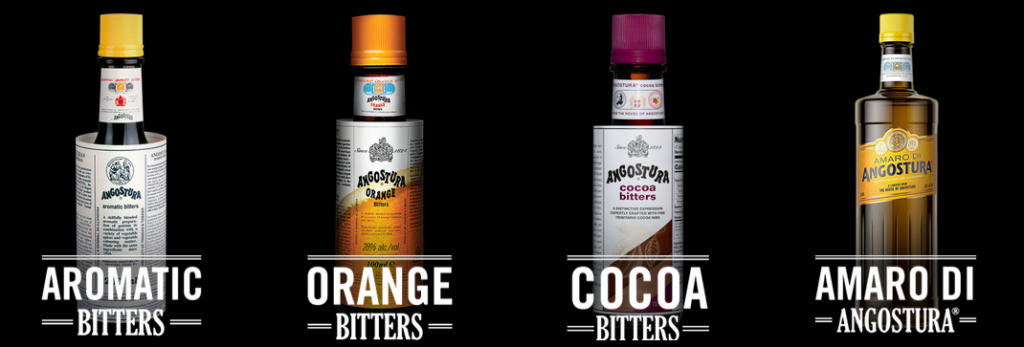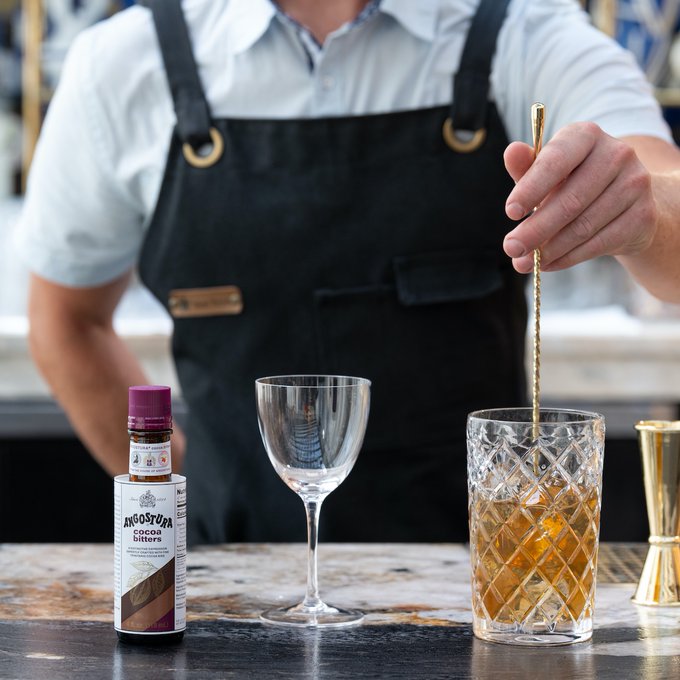In today’s drinking culture, bitters are an essential ingredient in many staple bar drinks as they give your drinks a twist and depth of flavor.
People have been using infusions of bitter botanicals for centuries as treatments for a wide range of diseases, but now are sold as digestifs, sometimes with herbal properties, and cocktail flavorings. An early definition of a cocktail, found in a New York newspaper “The Balance and Columbian Repository”, from 1806 calls it for four ingredients: “a stimulating liquor, composed of spirits of any kind, sugar, water, and bitters.”
The two most identifiable bitter brands in today’s world, Peychaud’s and Angostura, are the predominant in all type of cocktails. According to The Strategist, Angostura is the best-selling brand for bitters and Peychaud’s being the second best seller in the list.
These 2 are the most common and classic bitters one can get, but lets read and find out that what leaves these classic brands apart.
Origin
Angostura Bitters
It started in 1824, when founder Dr. Johann Siegert first produced aromatic bitters as a medicinal tincture designed to alleviate stomach ailments. In the 1870’s, his three sons migrated to Trinidad, among them Don Carlos Siegert, who pioneered the brand, establishing ANGOSTURA® aromatic bitters as an integral ingredient in cocktails and in food.
Peychaud’s Bitters
It was developed in 1838 by Antoine Peychaud in New Orleans apothecary of Creole origin, and carry on the tradition of bitters as a tonic. Unlike Angostura, which was and still is made in the Caribbean, Peychaud’s was bound by law to cease manufacture during Prohibition, but returned after repeal in 1933.


Flavor
Angostura bitters are ideal for making Manhattans or Champagne cocktails. (“If I was caught on a desert island and only allowed one, that would be it,” he says of Angostura.) Peychaud’s bitters, meanwhile, have a lower ABV, a slightly fruitier, sweeter flavor, and are ideal for cocktails like Sazeracs.
Pete Canny, a co-owner of the East Village bars and restaurants The Wild Son, Goodnight Sonny, and The Wayland.
Peychaud’s has a strong anise flavor, while Angostura “has much more of a spiced flavor, like cloves and cinnamon.”
Shane O’Neill, the lead bartender at Quality Eats in New York,
Color
Angostura Bitters
It is amber or caramel-colored, similar in appearance to watered-down cola.
Peychaud’s Bitters
It is brighter and more colorful than angostura, with cherry red and orange hues.


Alcohol Content
Angostura Bitters
44.7% ABV
Peychaud’s Bitters
35% ABV
Use in Cocktails
Aromatic bitters taste great with aged spirits: whiskies, rums, and brandies.
“Angostura bitters adds a layer of complexity, intensifies the flavor of other ingredients, counteracts the harshness of acidic contents and decreases the harshness of spirits. But it doesn’t stop there – it also helps cleanse the palate and aid in digestion”.
By the House of Angostura
A cocktail cabinet without Angostura is like a kitchen without salt and pepper. Try them with Old Fashioned, Manhattan, Pink Gin or Mai Tai.
“When it comes to bitters, every mixologist should have two staples: Angostura and Peychaud’s.”
Jarek Mountain, a co-owner and the beverage director of Boston’s Yellow Door Taqueria.
Peychaud tastes great in A Sazerac, Vieux Carré and à la Louisiane (New Orleans classics)




